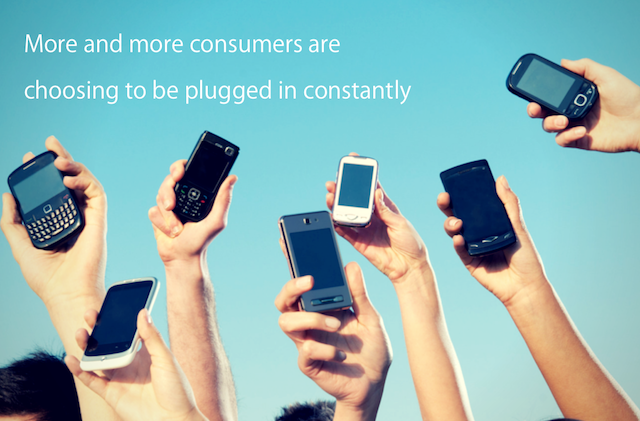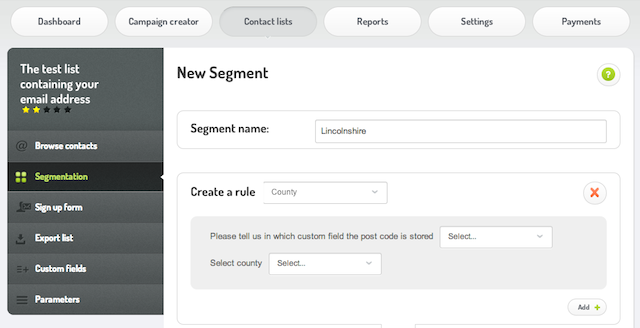 Paweł Sala
created
edited
Paweł Sala
created
edited
The march toward mobile moves on – keep up or get left behind
Back to list of articlesThe number of emails that are opened on mobile devices continues to rise with each passing year. It’s enough to look at your own habits and those of the people around you to see the trend for yourself. Isn’t everyone constantly tapping away on their phones or tablets? Doesn’t everyone have full access to email, social media and the internet even when away from home or the office?

It seems that almost no one is truly “out of touch” with the world and this is usually by choice. More and more consumers are choosing to be plugged in constantly. This connected-all-the-time lifestyle impacts how and when consumers are interacting with all different kinds of targeted marketing messages. Few people are restricted to opening emails only at home or only at work and this has consequences for planning and building email campaigns.
The numbers behind the trend
So you know that more and more of your subscribers are opening their email in a phone or tablet but you may not be aware of just how many are. You should be.
The Open Rate for any given email campaign will vary according to a few different factors but the latest data for all emails generally indicates that two thirds of them are opened on mobile devices. This mark was just passed earlier this year and statistics suggest that this number will only continue to climb.
Think about it - soon, about three out of four of emails will be opened on mobile devices. This amazing fact leads us to an obvious question for anyone utilizing email for online marketing campaigns -
Are you optimizing for mobile devices?
The dimensions and technical standards of mobile devices are an important consideration in the design stage of your email. So are the size and graphic layout of your email. Don’t let an improper display in your subscriber’s phone or tablet be the excuse she needs to think “delete” before she thinks “what’s this?”.
Going through a brief checklist of items is a must in a world where north of sixty percent of your mails will be opened on mobile devices:
- Did you limit your image size to 600 pixels?
- Is your font size at least 14 pixels?
- Are your click buttons at least 40 pixels wide?
- Have you made your graphic layout more user-friendly by avoiding side-by-side columns and designs that don’t make your offer clear at the top of the page?
Failure to address these issues is a failure meet the needs of two thirds of your recipients who - you hope - might open your mail.

On top of this, remember that you can run simple inbox and code tests in the creation stage of your email campaign. In FreshMail, you will find tests specifically designed to test how messages will appear in devices powered by the most recent versions of Android and iOS. All you have to do is run the tests and you are almost instantly aware of changes you have to make. Maybe an extra minute or two of your time is the price to pay for potentially thousands of lost chances to communicate your message. Sounds like a good deal to us.
What the mobile revolution means for geotargeting
This dramatic shift in the online marketing landscape will shake up many aspects of email campaigns but for the moment let’s pick one to examine a bit more carefully - geotargeting.
The increasing dominance of mobile devices as a communication platform can enhance or restrict your use of geotargeting and, by extension, subscriber segmentation but unfortunately this is due to circumstances beyond your control. The mobile internet architecture in the country or region where your campaign is deployed is the determining factor in the accuracy of your geotargeting. In some markets, mobile IP addresses can be geographically linked in the same way fixed line IP addresses are. If this is the case in your market then the rise in the use of mobiles does not affect your ability know where your subscribers are when they open your mails.
In other markets, however, the way that mobile device users are connected to the internet presents a problem for email marketers. In these places, IP tracking information is typically limited to the location of the internet service provider, usually a mobile phone company. In other words, geotracking information will show that all emails opened on a mobile device were opened in the geographical location of the internet service provider rather than the actual geographic location of the subscriber. This presents obvious problems for anyone trying to target users in a particular region. If you are in such a market, it’s highly likely that the mobile internet infrastructure will eventually be “upgraded” but for now your geotargeting tools cannot work to their full potential.

Ride the wave or get pulled under
The statistics are clear. While desktop users are still a significant portion of your subscribers, that part of the pie is getting smaller. The wireless world is increasingly where your subscribers are when you are trying to reach them. This is the space they are living in and this is the place where, more and more frequently, they choose to interact with marketers. If your email isn’t designed and sent with this in mind then you have started down the path to lower Open Rates, lower click rates and potentially a disappointing bottom line.
If you haven’t verified that you are doing everything you can to ensure that your email campaign is as mobile device-friendly as possible, you need to. Now.

